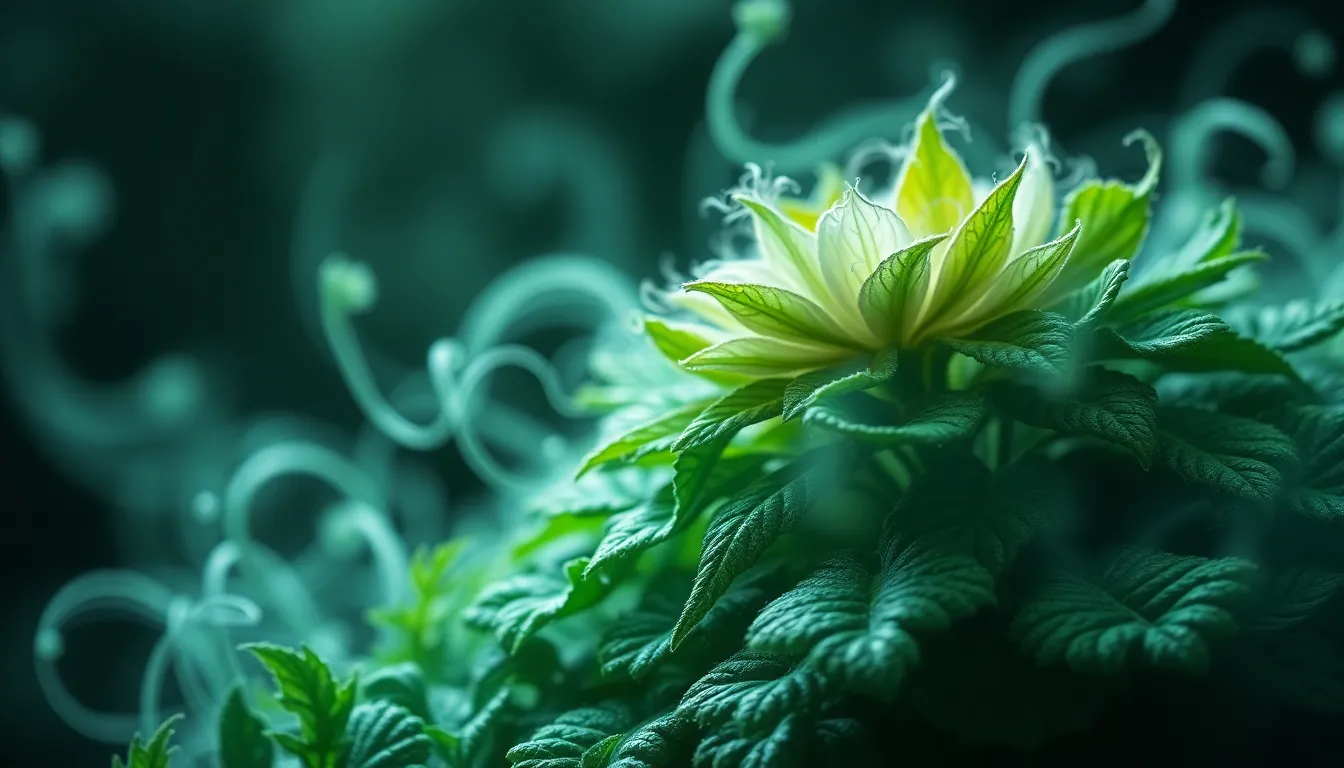Plants and Their Myths: The Stories Behind Your Favorite Greens
Introduction to Plant Myths
Myths are traditional stories that serve to explain natural phenomena, human behavior, and cultural beliefs. They often embody the values and wisdom of a society while providing insight into the human condition. Plants, being fundamental to life, have held significant positions in various myths and legends throughout history. Their importance is not only ecological but also cultural, as they have been interwoven into the fabric of human existence across civilizations.
The Historical Significance of Plants in Mythology
Throughout ancient civilizations, plants were more than mere resources; they were imbued with spiritual significance, representing various divine attributes and powers. Different cultures crafted myths surrounding these plants, often attributing gods or supernatural beings to them.
- Greek Mythology: The olive tree, sacred to Athena, symbolizes peace and prosperity.
- Egyptian Mythology: The sycamore tree is considered a gateway between the earthly realm and the afterlife.
- Indigenous Mythologies: Many tribes view plants like tobacco as sacred, used in rituals to connect with the spirit world.
The Myth of the Sacred Lotus: Symbolism and Significance
The lotus flower is a potent symbol across various cultures, often associated with purity, enlightenment, and rebirth. In Egyptian mythology, the lotus holds a special place. It is believed that the sun god Ra emerged from a lotus flower, and the bloom itself is a representation of the sun’s daily cycle.
In Buddhism, the lotus symbolizes spiritual awakening and the potential for growth, rising from muddy waters to bloom beautifully. This duality of growth from adversity makes the lotus a powerful symbol in both spiritual and cultural contexts.
The Enigmatic Mandrake: Folklore and Reality
The mandrake plant has captivated human imagination for centuries due to its peculiar shape and psychoactive properties. Folklore suggests that the mandrake possesses magical qualities, often associated with fertility and protection. In ancient texts, it was described as a potent aphrodisiac and a remedy for various ailments.
However, the myths surrounding the mandrake often overshadow its realities. While it does have historical medicinal uses, its effectiveness and safety are frequently exaggerated in folklore. The myths also speak of how the plant supposedly screams when uprooted, which adds to its enigmatic allure.
The Healing Herbs: Myths of Medicinal Plants
Many common herbs have garnered reputations for their supposed healing powers, often rooted in ancient mythology. Here are a few notable examples:
- Garlic: Believed to ward off evil spirits and provide protection against illness.
- Sage: Used in purification rituals and thought to enhance wisdom.
- Lavender: Associated with calmness and healing, often used in aromatherapy.
While many of these herbs possess some scientifically recognized health benefits, the myths surrounding them often exaggerate their efficacy. For instance, while garlic is known for its antibacterial properties, it is not a cure-all as some myths might suggest.
Cursed Plants: The Dark Side of Flora
Not all plants are celebrated; some are steeped in dark myths. For instance, belladonna and hemlock have been associated with death and misfortune. Belladonna, or deadly nightshade, was historically used in potions and poisons, earning its sinister reputation.
These plants are often viewed with fear, and their myths can lead to misunderstandings about their potential uses. The negative perceptions surrounding these plants have influenced societal views and their application in both medicine and folklore.
The Greenman: Nature’s Guardian and Plant Personification
The Greenman is a figure commonly found in folklore and art, representing nature and the cycle of growth. Often depicted as a face made of leaves and vines, he symbolizes the interconnectedness of humanity and the natural world.
This archetype reflects the deep respect and reverence that many cultures hold for nature. The Greenman embodies the idea that humans are not separate from nature but rather an integral part of it, reminding us of our responsibility to care for the environment.
Festivals and Rituals: Celebrating Plants Through Myth
Plants play a significant role in various global celebrations and rituals, often rooted in ancient traditions. Notable examples include:
- May Day: Celebrated in many cultures, this festival marks the arrival of spring and often involves dancing around a maypole adorned with flowers.
- Harvest Festivals: These are held in numerous cultures to give thanks for the harvest, featuring rituals that honor the plants and crops that sustain life.
These celebrations highlight the mythological significance of plants, serving as a reminder of their importance in sustaining human life and culture.
Modern Interpretations of Plant Myths
Today, ancient plant myths continue to inspire contemporary culture. The revival of interest in herbalism and sustainable living has led to a resurgence of these stories. Social media platforms are abuzz with discussions about plant lore, as individuals share tips and tales surrounding the use of various plants.
Literature, too, has seen a resurgence of plant-related themes, with authors weaving myths into modern narratives, exploring the relationship between humans and nature through the lens of these ancient stories.
Conclusion: The Enduring Legacy of Plants and Their Myths
Throughout history, plants have not only provided sustenance but have also inspired a wealth of myths and legends that reflect the human experience. From the sacred lotus to the enigmatic mandrake, these stories enrich our understanding of the natural world and our place within it.
The relationship between plants, myths, and human culture continues to endure, reminding us of the profound connections we share with nature. As we explore these narratives, we gain insight into the values, fears, and hopes that have shaped societies throughout time.



